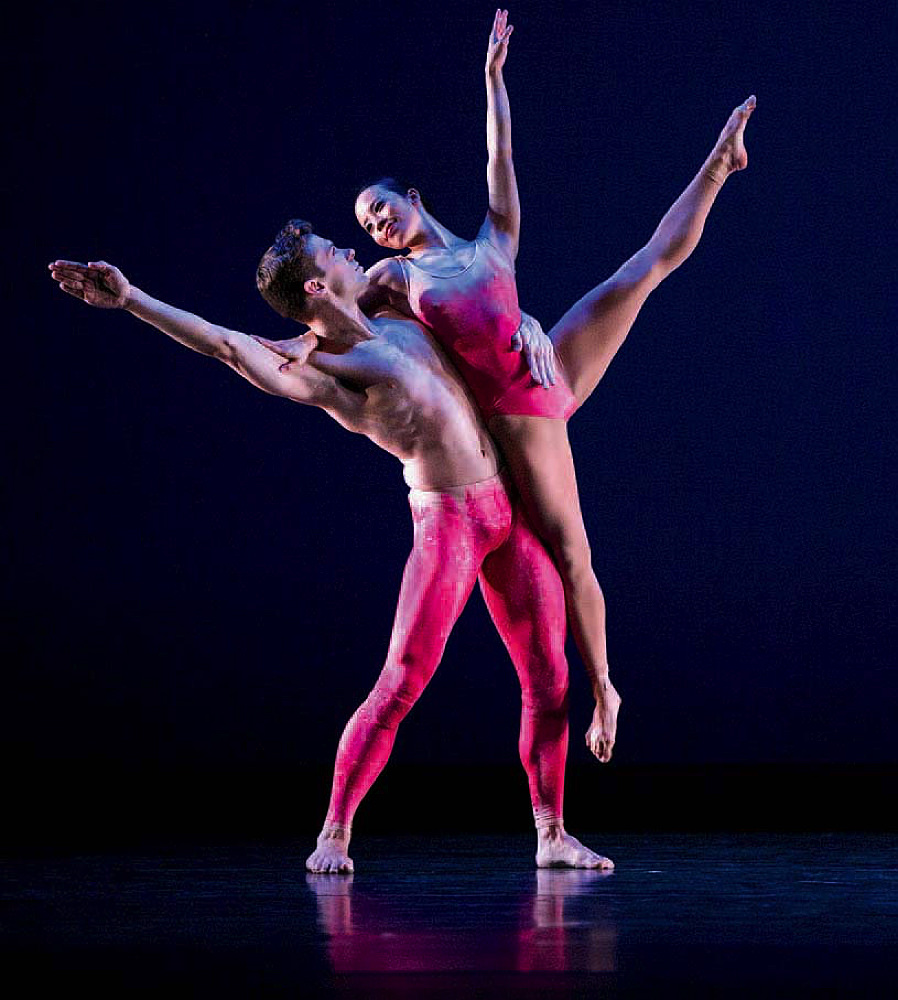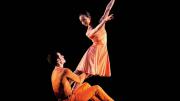On a Wednesday afternoon in April, members of the Paul Taylor Dance Company rehearsed Esplanade in their sunny, Lower East Side studio. Eight dancers leapt and crawled, paired up and drifted apart, and walked, ran, and slid across the floor—pedestrian movements made elegant.
As the smallest dancer, barely skimming five feet, Madelyn Ho ’08 stood out among her taller counterparts. She wore a green leotard with purple legwarmers pulled up over her knees and an unwavering smile—a resting grin face—that she made disappear only with seeming effort during darker, moodier parts of the choreography. Her steps were precise yet energetic.
Ho also stands out in her company for another reason: her dance career has been entwined with one in medicine. After graduating with a degree in chemical and physical biology and a serious love of dance, she joined Paul Taylor’s smaller company, Taylor 2, right out of college. In 2012, having auditioned for the main company twice without success, and feeling she’d learned all she could, she moved back to Boston to start at Harvard Medical School (HMS). Three years in, while looking up PTDC’s performance dates, she spotted an audition notice. She decided she’d try out a third time.
“It was this sort of immediate gut reaction,” she said. Until that point, she’d figured she was done with dancing. But she couldn’t pass up the opportunity to audition, just to see what would happen. She thought the outcome would give her some closure—a final confirmation that her dance career was in fact behind her. “I just didn’t have any expectations,” she said, “and so I felt like I was able to, in some ways, be freer.”

Madelyn Ho performs in Taylor's balletic Mercuric Tidings, set to music by Franz Schubert.
Photograph by Whitney Browne
Ho made the main company. She broke her lease and started dancing full time in the spring of 2015, squeezing her fourth-year medical requirements into her professional schedule. Her schedule changed by the day, but in general, time off from rehearsals meant a full day in a clinic or hospital as part of her rotations, or work on her research project about the history of dance medicine. Sometimes she skipped company class to spend the morning on rotation, then joined her fellow dancers at noon for a five-hour rehearsal: running through pieces, learning repertory from videos, or creating new work with an outside choreographer. Then Ho would complete a kettlebell workout—“I call them ‘my moves!’”—as part of her cross-training. On the commute to her Upper East Side apartment, she’d start her homework: reviewing her choreography and reading medical articles to answer questions from the previous day’s clinical round and in preparation for the next one.
Finding the balance has been taxing, but the pursuits have been complementary. “The body is our instrument, and medicine is just understanding the body better,” said Andy LeBeau, the assistant artistic director at Taylor. “Madelyn’s become very vital to a lot of the dancers. Her nickname’s Dr. Ho, and everybody asks her questions.”
Ho’s willingness to chart her path by following her passions mimics how she’s developed as a performer. She trained as a ballerina throughout high school; when she first started as a modern dancer in college, she focused on nailing the technical movements. This tendency carried over to Taylor 2, where LeBeau noticed her determination to be perfect and worried that she might have trouble finding the artistry in the movements, or allowing herself to have fun. Now he sometimes jokes with Ho during the more intense moments of practice that it’s dance, not brain surgery. “She’s grown intelligent enough to realize that it’s about the intention,” he said. “It’s not about the actual step, and that step can change as long as the intention maintains its integrity.”
Ho has embraced the way Taylor’s choreography—at once athletic and expressive, in which dancers are cast as humans, never swans—invites her to engage emotionally, based on her personal experiences. Her interpretations of Esplanade in particular change constantly. “Right now, I see the comings and goings as the natural progression of things,” she said. “There’s that initial bittersweet moment, but then with change comes a new opportunity.”
That also reflects her stance in anticipation of her May graduation from HMS. For now, Ho intends to continue her career with PTDC, holding off on taking up her medical residency for the foreseeable future. Eventually, she wants to pursue dance medicine, an interest sparked by her recognition of the unique demands dance places on the body and her experience of suffering a dance injury as an undergraduate. In the meantime, she’s figuring out how to continue studying medicine outside medical school—perhaps by spending more time at the Harkness Center for Dance Injuries at NYU Langone Medical Center, where she completed a clinical rotation earlier this year.
“I’m at a place right now where I’m really growing and happy where I am dancing,” she said. “I’ll see where it takes me.”









